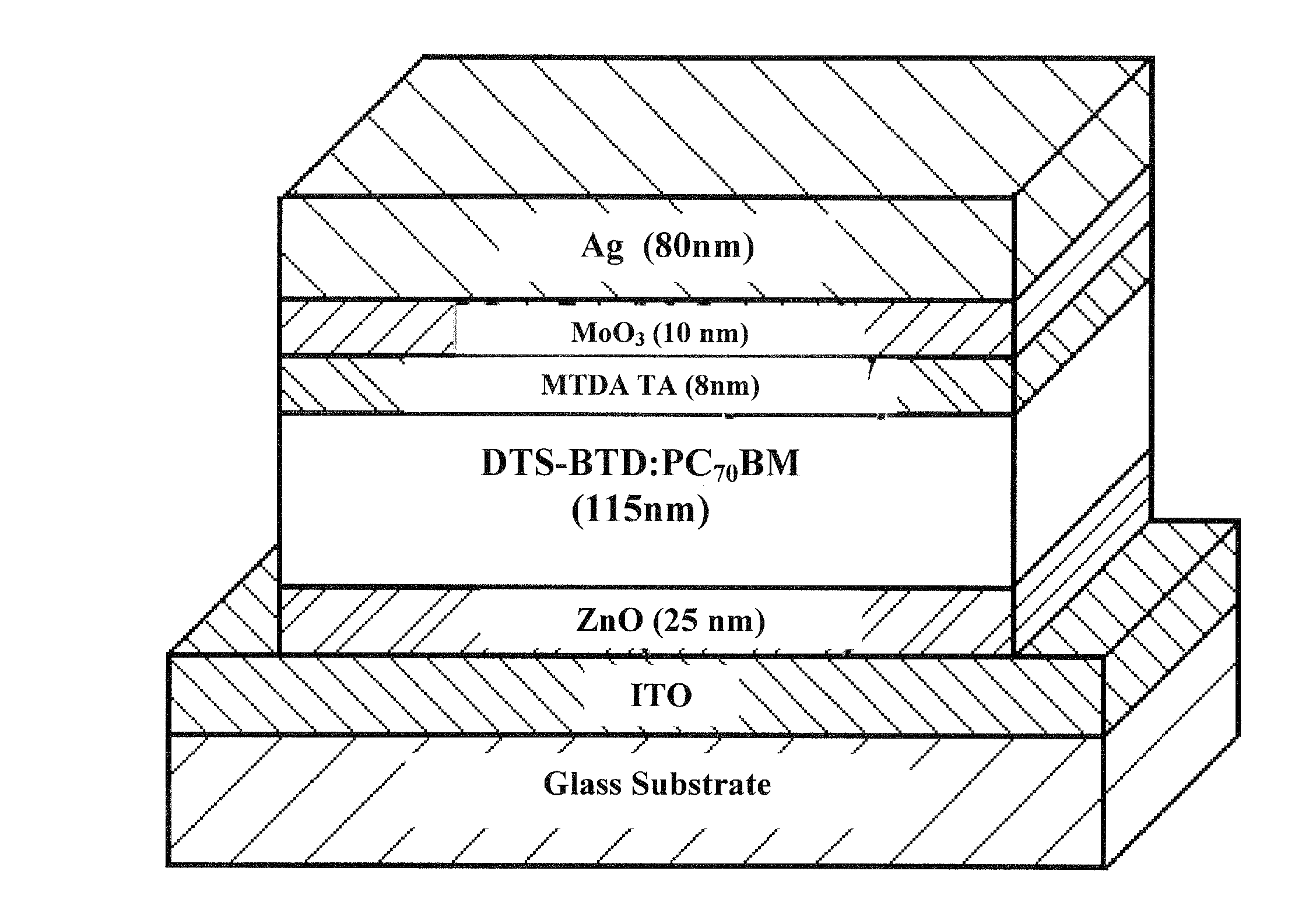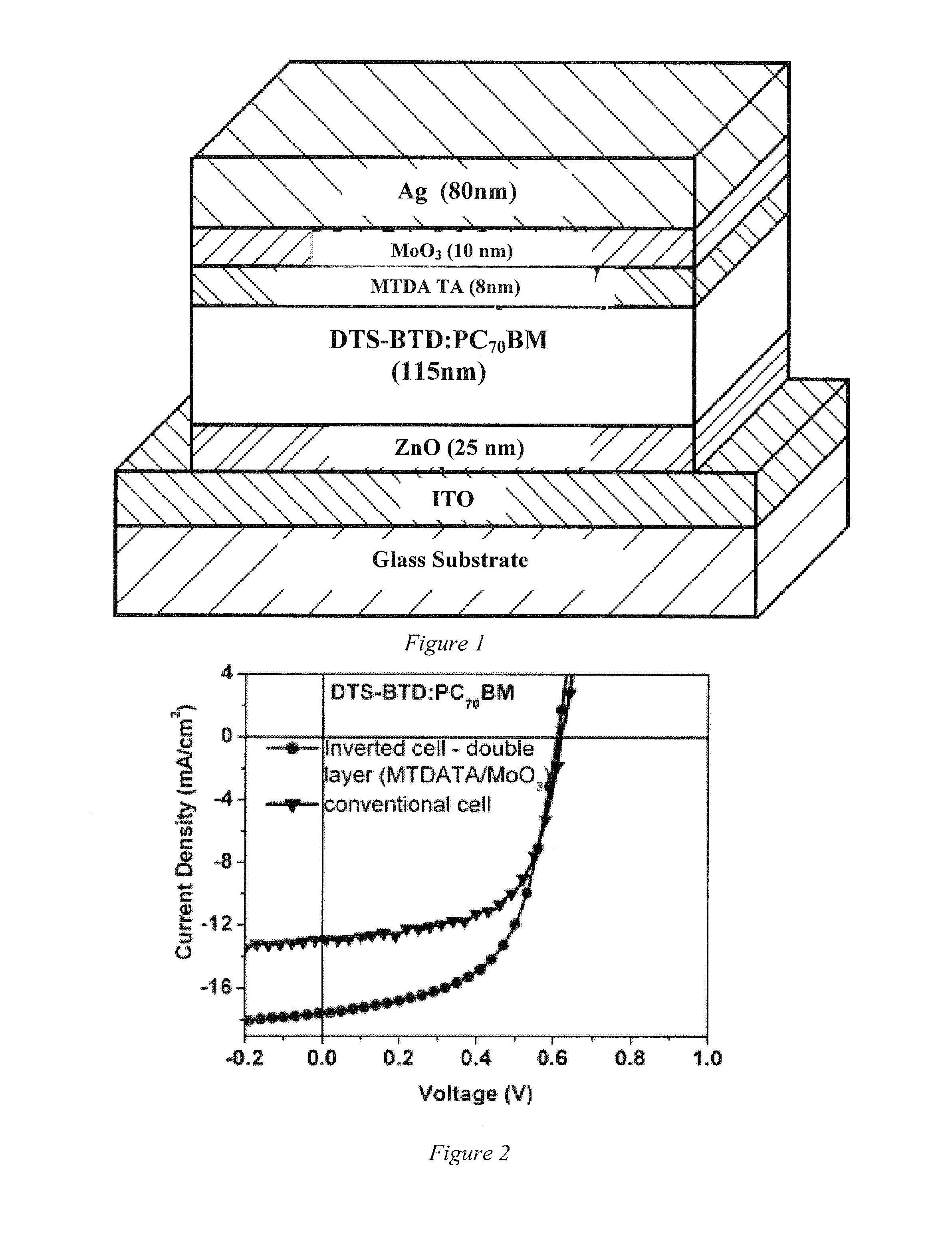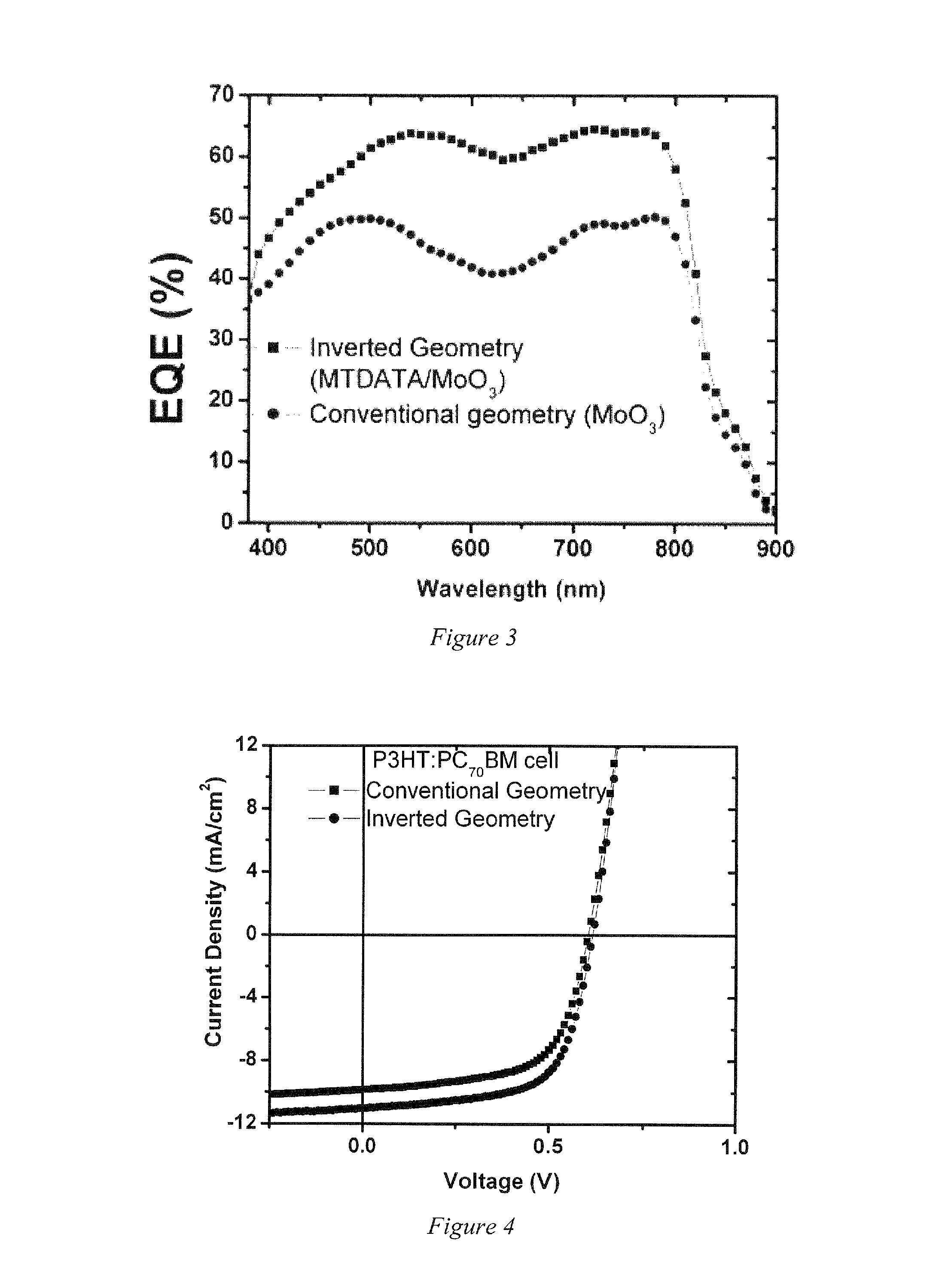Inverted polymer solar cell using a double interlayer
a solar cell and polymer technology, applied in the field of inverted polymer solar cells using double interlayers, can solve problems such as deviation from optimal behavior
- Summary
- Abstract
- Description
- Claims
- Application Information
AI Technical Summary
Benefits of technology
Problems solved by technology
Method used
Image
Examples
Embodiment Construction
[0015]Embodiments of the invention are directed to inverted solar cells where, for example, thin layers of ZnO nanoparticles and MoO3 were used as interlayers for the bottom cathode and the top anode, respectively, and where a second interlayer, a wide band-gap electron blocking hole transporting layer (HTL), is situated between the active layer and hole extraction interlayer, MoO3, to further enhance the inverted solar cell's performance because of the double interlayer at the anode. The anode double layer comprises a semiconducting metal oxide layer for hole extracting and an organic hole transporting electron blocking material layer. In one embodiment or the invention, the HTL is a thin film of 4,4′,4″-tris[N-(3-methylphenyl)-N-phenylamino]triphenylamine (MTDATA). The inclusion of the HTL / MoO3 anode double interlayer improves the hole extraction from the photoactive layer and improves hole transport to the anode. By using the double interlayer as a hole extraction / electron blocki...
PUM
| Property | Measurement | Unit |
|---|---|---|
| Polarity | aaaaa | aaaaa |
| Efficiency | aaaaa | aaaaa |
| Transparency | aaaaa | aaaaa |
Abstract
Description
Claims
Application Information
 Login to View More
Login to View More - R&D
- Intellectual Property
- Life Sciences
- Materials
- Tech Scout
- Unparalleled Data Quality
- Higher Quality Content
- 60% Fewer Hallucinations
Browse by: Latest US Patents, China's latest patents, Technical Efficacy Thesaurus, Application Domain, Technology Topic, Popular Technical Reports.
© 2025 PatSnap. All rights reserved.Legal|Privacy policy|Modern Slavery Act Transparency Statement|Sitemap|About US| Contact US: help@patsnap.com



